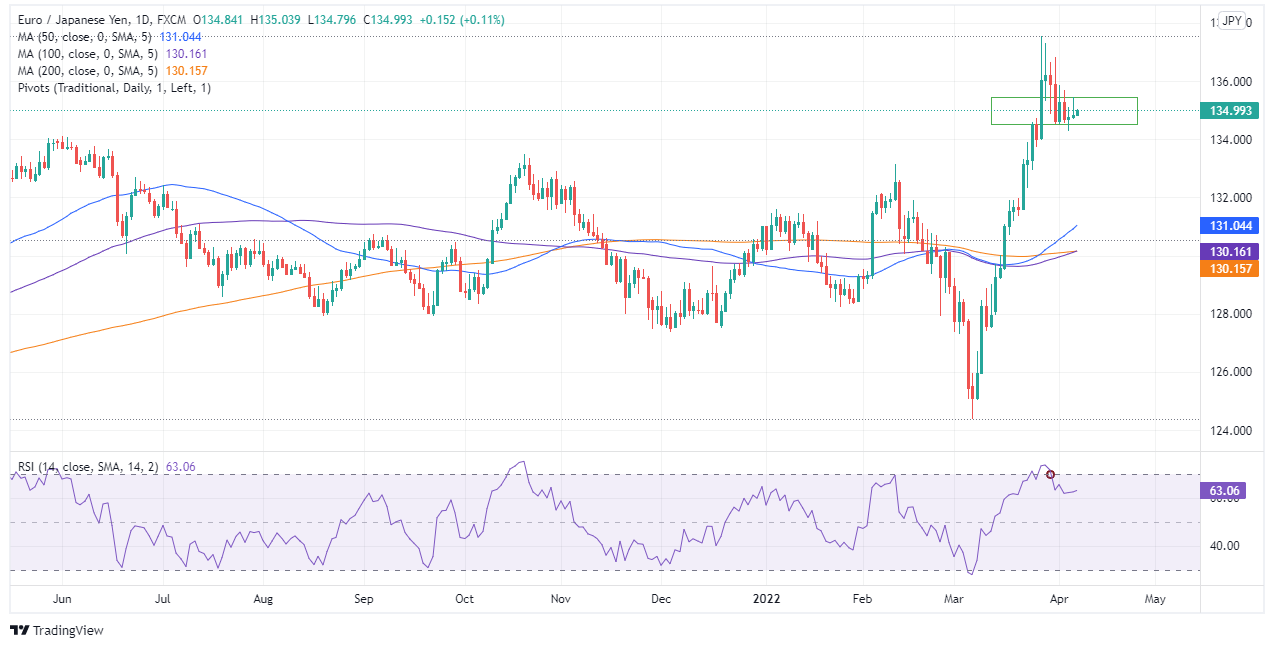EUR/JPY Price Analysis: Confined to the 134.50-135.45 range amid risk-aversion
- The EUR/JPY pair consolidates in the 134.20-135.50 range on downbeat sentiment.
- EUR/JPY Price Forecast: Trapped within the 134.50-135.45 range amidst the lack of a catalyst.
EUR/JPY is subdued as the Asian Pacific session begins, within Wednesday’s 134.70/135.45 range, amidst a dismal sentiment, courtesy of continuing Ukraine-Russia hostilities and global central bank tightening. At the time of writing, the EUR/JPY is trading at 134.99.
On Wednesday, the EUR/JPY opened near the day’s lows and seesawed near the 50-hour simple moving average (SMA) around 134.80s. EUR/JPY bulls entered the market in the European session and lifted the pair above the 135.00 mark, but the Fed’s March minutes increased risk-aversion, dragging the cross-currency down towards current levels.
EUR/JPY Price Forecast: Technical outlook
After reaching a YTD high at 137.54, the EUR/JPY slid almost 300 pips in three consecutive days. Since then, the EUR/JPY has been range-bound in the 134.50-135.45 range, unable to break upwards/downwards of its boundaries. Nevertheless, the Relative Strength Index (RSI) at 60.98 exited overbought conditions on March 30, when the pair fell from 136.84 to 134.60 and has enough room to spare in the case that EUR bulls aim to push prices higher.
Upwards, the EUR/JPY’s first resistance would be 135.00. A decisive break would expose 135.45, followed by the 136.00 mark. On the flip side, the EUR/JPY first support would be 134.50. Breach of the latter would expose April 5 daily low at 134.29, followed by the psychological 134.00 level.

Technical levels to watch
